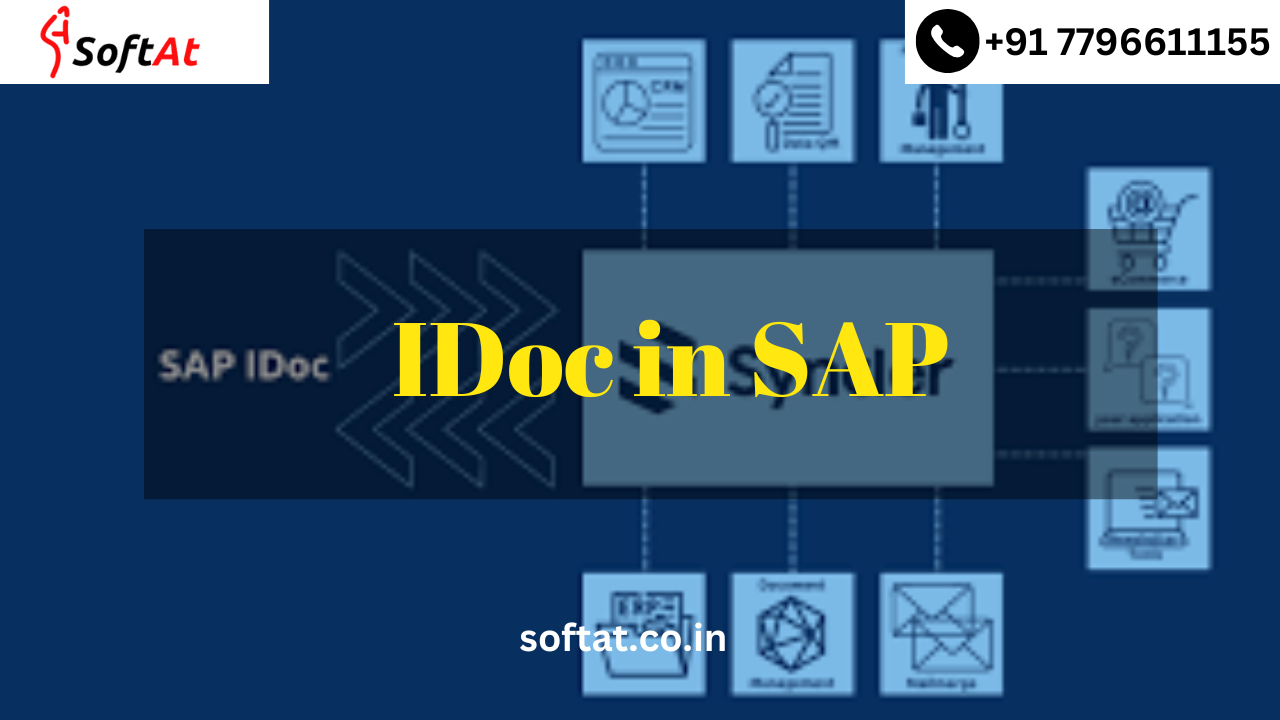IDoc, short for Transitional Record, is a standard information structure utilized in SAP frameworks for electronic information exchange (EDI) among SAP and non-SAP frameworks or even inside SAP frameworks. IDocs assume a basic part in empowering consistent correspondence between frameworks, applications, and associations. This blog dives into all that you want to be aware of IDocs, from their construction and setup to their viable purposes and investigating.
What is an IDoc?
An IDoc is a container format for exchanging data between different systems. It is SAP’s standard for transferring data in a structured format to enable automation and integration of business processes.
Key Characteristics of IDocs:
- Normalized Organization: Guarantees consistency in information trade.
- Nonconcurrent Correspondence: Information is traded without calling for ongoing association.
- Adjustable: Can be custom-made to fit explicit business needs.
- Upholds Numerous Utilization Cases: Helpful for EDI, application combination, and information relocation.
Components of an IDoc
An IDoc is composed of the following key elements:
- Control Record (EDIDC)
The control record contains metadata about the IDoc, for example,
Source and beneficiary data
IDoc type and message type
Status and handling subtleties
- Information Record (EDID4)
The information record contains the genuine information being traded. It is organized into sections, with each fragment holding explicit fields of information. - Status Record (EDIDS)
The status record tracks the handling status of the IDoc. Normal status codes include:
03: Information sent effectively
12: Information move finished
51: Application mistake during handling
64: Prepared for dispatch
Kinds of IDocs
SAP sorts IDocs in view of their motivation and correspondence mode:
- Fundamental IDoc Types
Characterized by SAP and contain standard designs for explicit business situations.
Model: ORDERS01 for buy orders. - Broadened IDoc Types
Custom expansions of essential IDoc types to oblige extra information or fields.
Model: Stretching out ORDERS01 to incorporate custom fields. - Inbound and Outbound IDocs
Inbound IDocs: Information shipped off SAP from an outer framework.
Outbound IDocs: Information sent from SAP to an outer framework.
IDoc Architecture
The architecture of IDocs ensures smooth data flow between systems. Key components include:
- Consistent Frameworks: Remarkable identifiers for frameworks engaged with correspondence.
- Ports: Characterize the correspondence channel, for example, document based, Lager, or EDI.
- Accomplice Profiles: Arrangement settings for characterizing the shipper and beneficiary subtleties.
- Sections: Address the progressive design of the information.
IDoc Lifecycle
1. Creation
- In an outbound process, IDocs are created in SAP using transaction codes like
WE19or through standard business transactions.
2. Transmission
- IDocs are transmitted to the target system via configured communication channels.
3. Processing
4. Monitoring
- The IDoc status is monitored using transaction codes like
WE02orWE05.
Configuring IDocs in SAP
- Characterize Legitimate Frameworks
Use Deal exchange to make legitimate frameworks for shipper and collector. - Set Up RFC Associations
Design RFC objections utilizing SM59. - Make Accomplice Profiles
Use WE20 to characterize accomplice profiles, including accomplice type, message type, and interaction codes. - Characterize Ports
Use WE21 to design ports, indicating the correspondence channel. - Appoint Message Types
Connect IDoc types to message types in WE82.
IDoc Use Cases
- Electronic Information Trade (EDI)
IDocs are broadly utilized for EDI cycles, for example, request to-cash and get to-pay cycles. - Framework Incorporation
IDocs empower information move among SAP and non-SAP frameworks, for example, moving HR information to a finance framework. - Ace Information Circulation
Circulate client, merchant, or material expert information across various SAP occurrences. - Information Movement
Utilized in movement tasks to stack information into SAP frameworks.
Monitoring and Troubleshooting IDocs
- Checking IDocs
Use exchange codes like:
WE02: Show IDocs by type, status, or date.
WE05: Screen IDoc situations with.
BD87: Go back over bombed IDocs.
Investigating Normal Blunders
Status Code 51 (Application Blunder)
- Check application logs (SLG1) for subtleties.
Confirm information consistency and planning.
Status Code 64 (Prepared for Dispatch) - Guarantee correspondence channels are dynamic.
Use RSEOUT00 program to process forthcoming IDocs.
Status Code 03 (Information Sent Effectively yet Not Got) - Confirm network and target framework accessibility.
Best Practices for Working with IDocs
Normalize Naming Shows
- Utilize reliable naming for custom IDoc types and portions.
Influence SAP Apparatuses - Use apparatuses like the IDoc Test Device (WE19) for testing.
Keep up with Nitty gritty Logs - Save logs of IDoc exchanges for evaluating and investigating.
Mechanize Observing - Set up alarms for explicit IDoc status codes.
Improve Execution - Use bunch handling for enormous volumes of IDocs.
Advanced Topics
- Custom IDoc Advancement
Expand existing IDoc types or make new ones utilizing WE30.
Foster custom sections with exchange WE31. - IDoc Planning and Change
Use middleware apparatuses like SAP PI/PO for planning IDoc fields to non-SAP designs. - Mix with Cloud Stages
Use IDocs with cloud connectors to incorporate with stages like SAP Business Innovation Stage (BTP).
The Future of IDocs
While SAP is pushing toward fresher combination innovations like APIs and OData administrations, IDocs stay a solid decision for the overwhelming majority heritage frameworks and high-volume exchanges. The blend of IDocs with current middleware guarantees their pertinence in half breed conditions.
Conclusion
IDocs are a principal part of SAP’s coordination structure, empowering consistent information trade between frameworks. Grasping their construction, setup, and investigating techniques engages organizations to computerize and improve basic cycles. By following prescribed procedures and utilizing progressed apparatuses, associations can outfit the maximum capacity of IDocs in their SAP environments.
Whether you’re overseeing EDI, coordinating frameworks, or relocating information, IDocs offer a vigorous and flexible arrangement.
You may be interested in:
A Deep Dive into SAP API Management
Integration cloud system to HANA Cloud Platform using Cloud Connector





